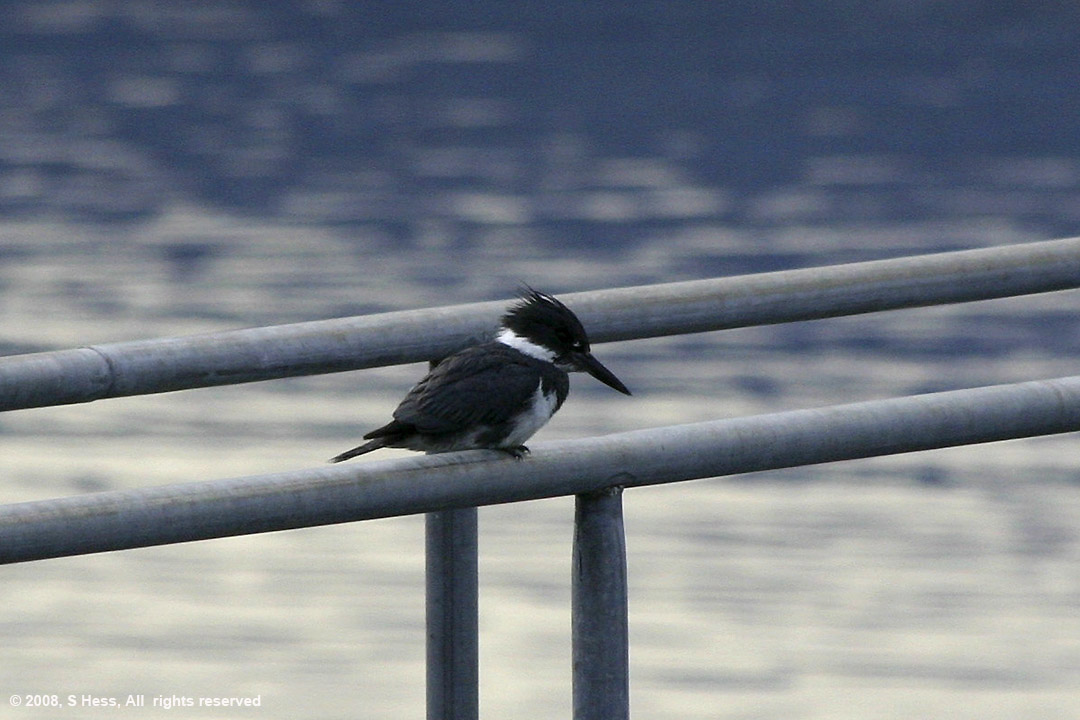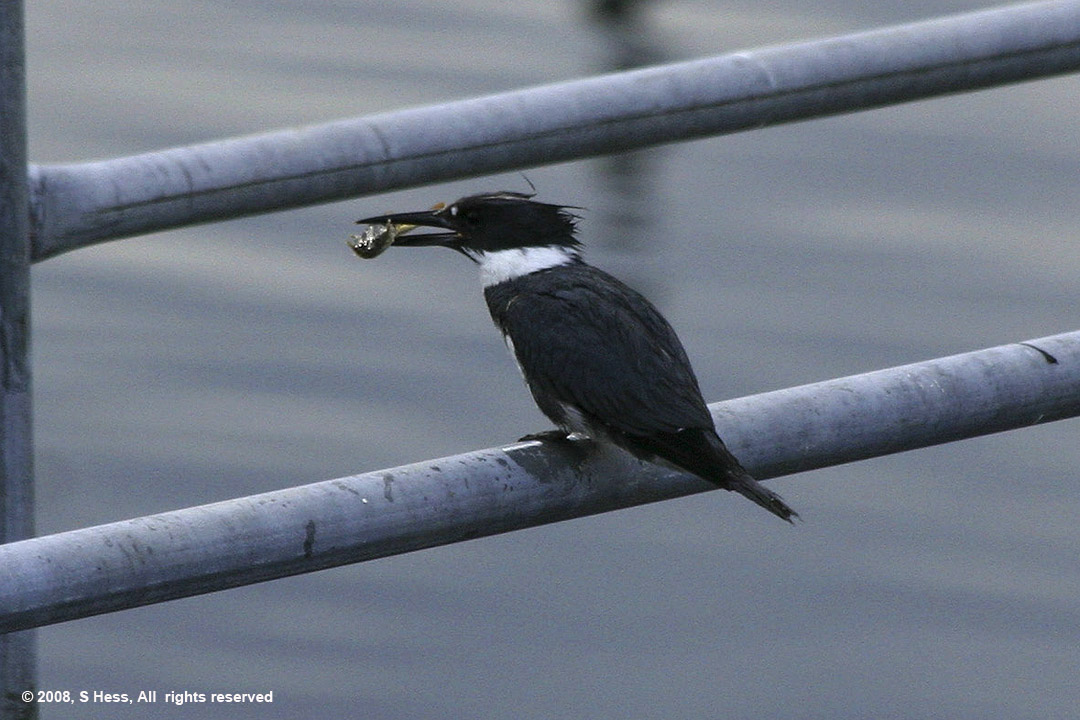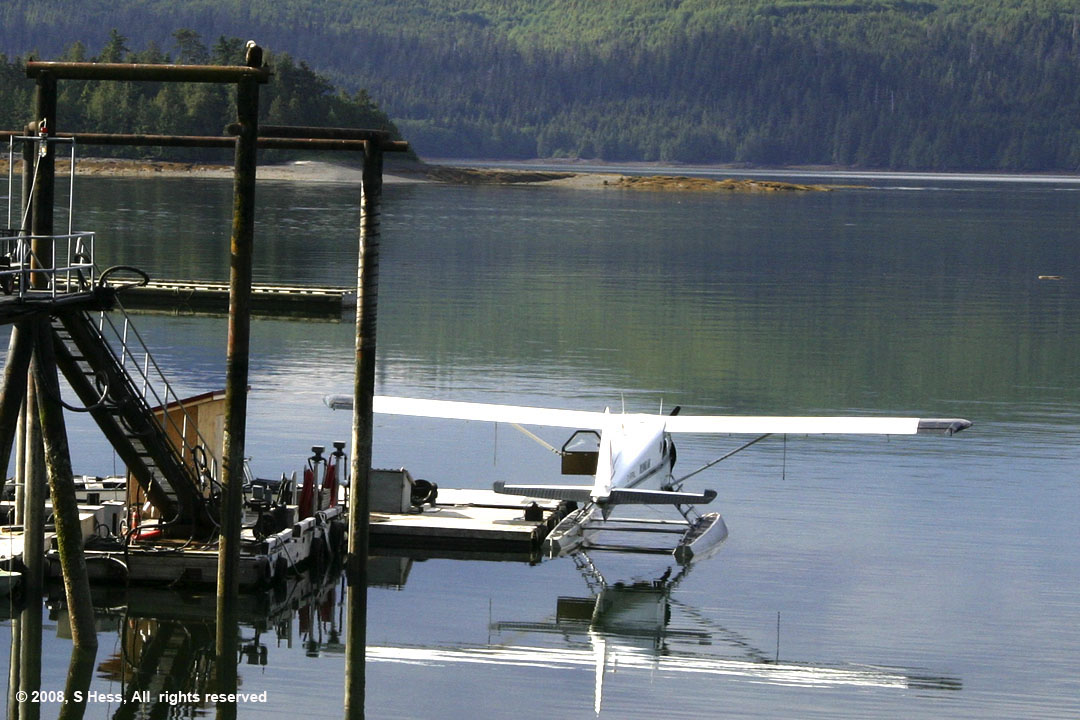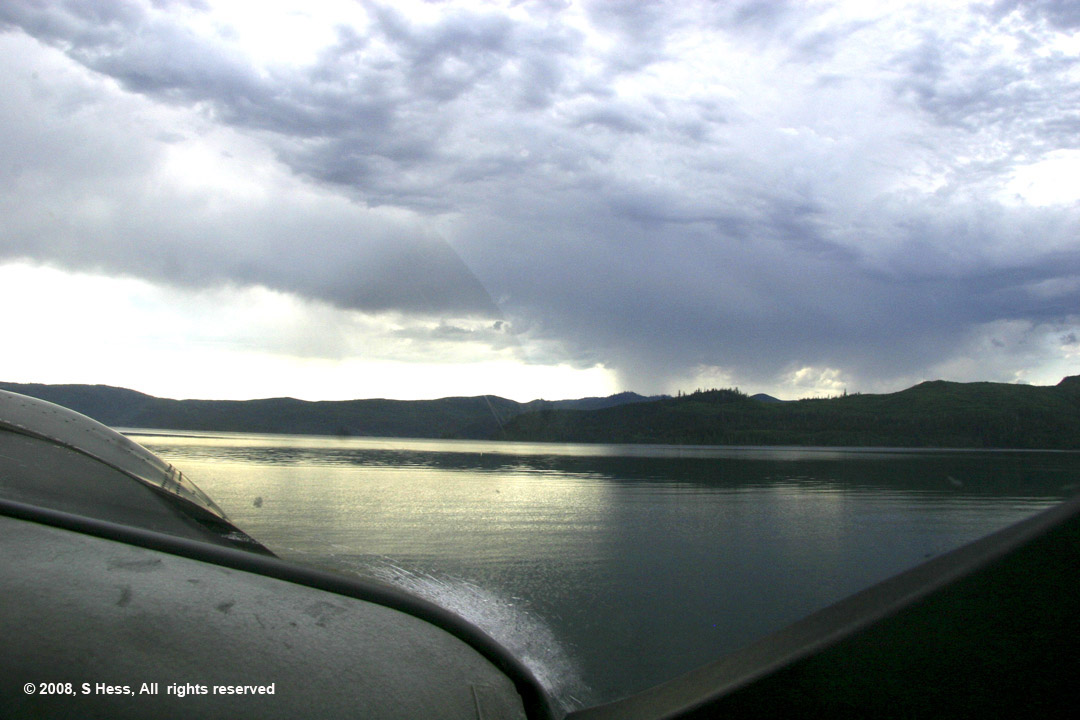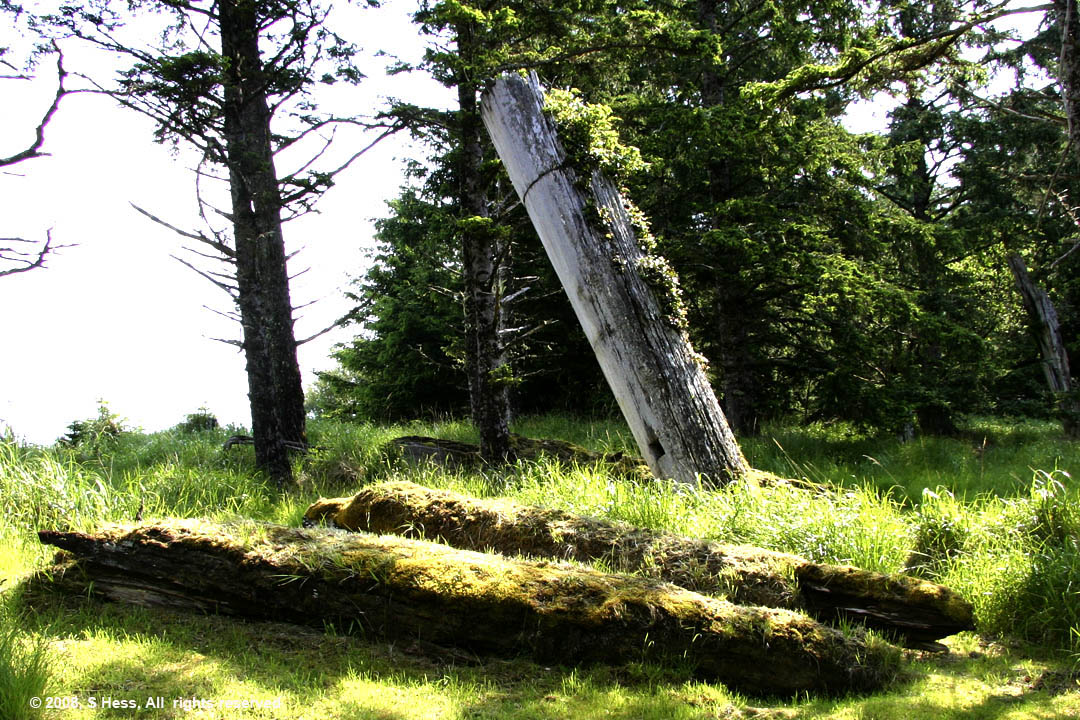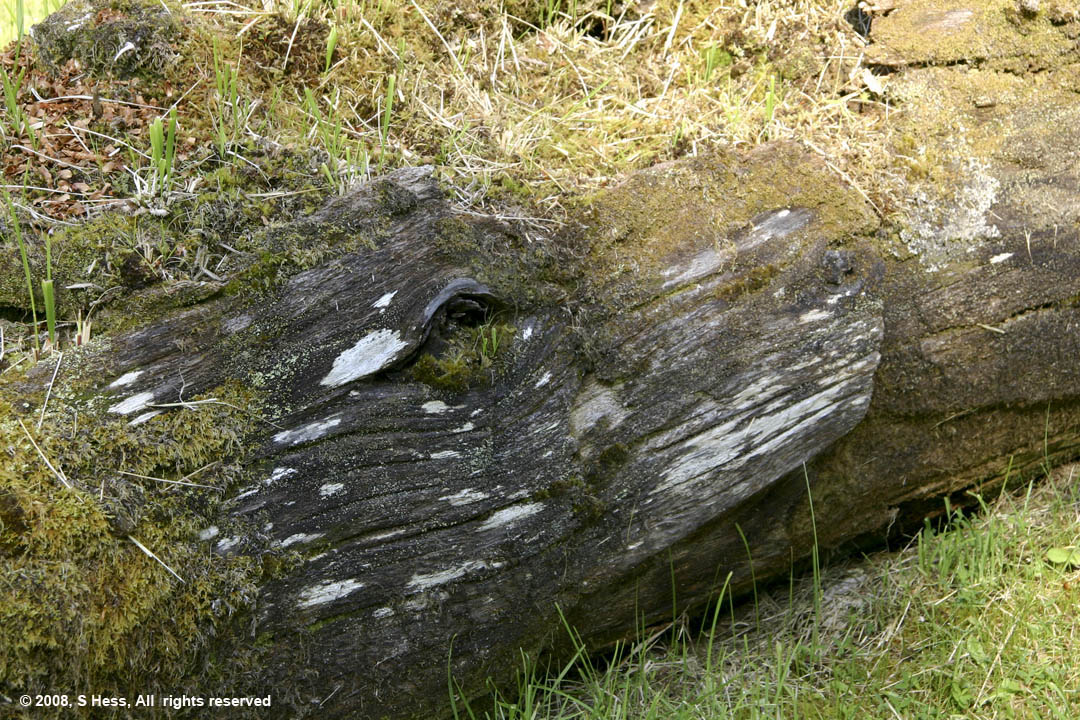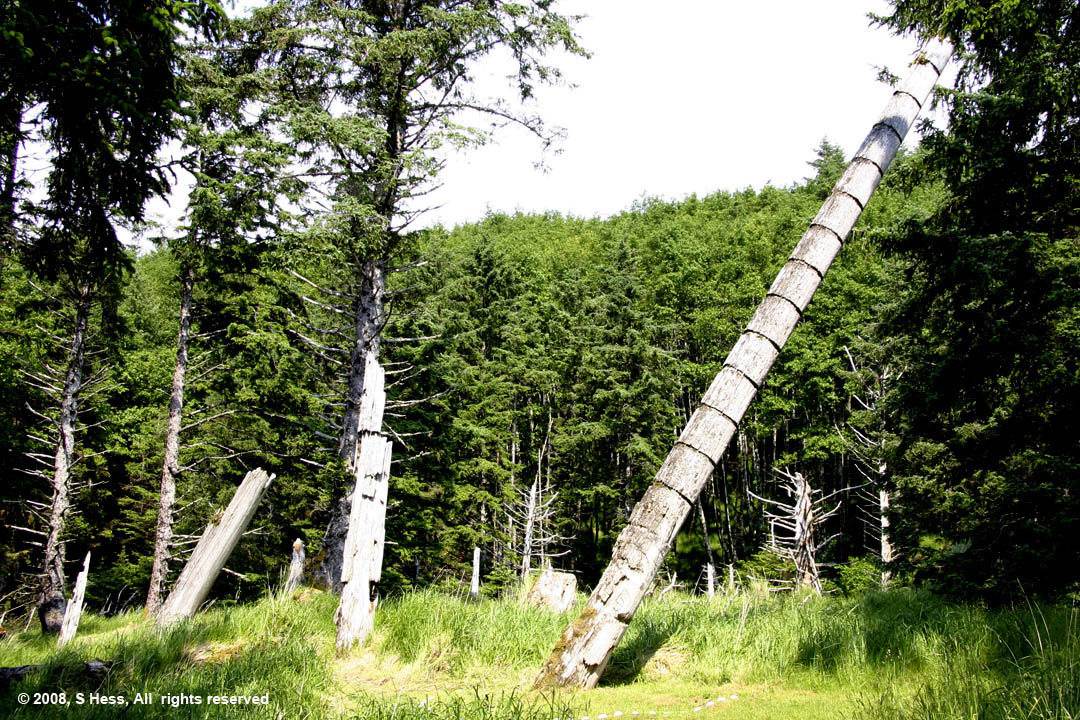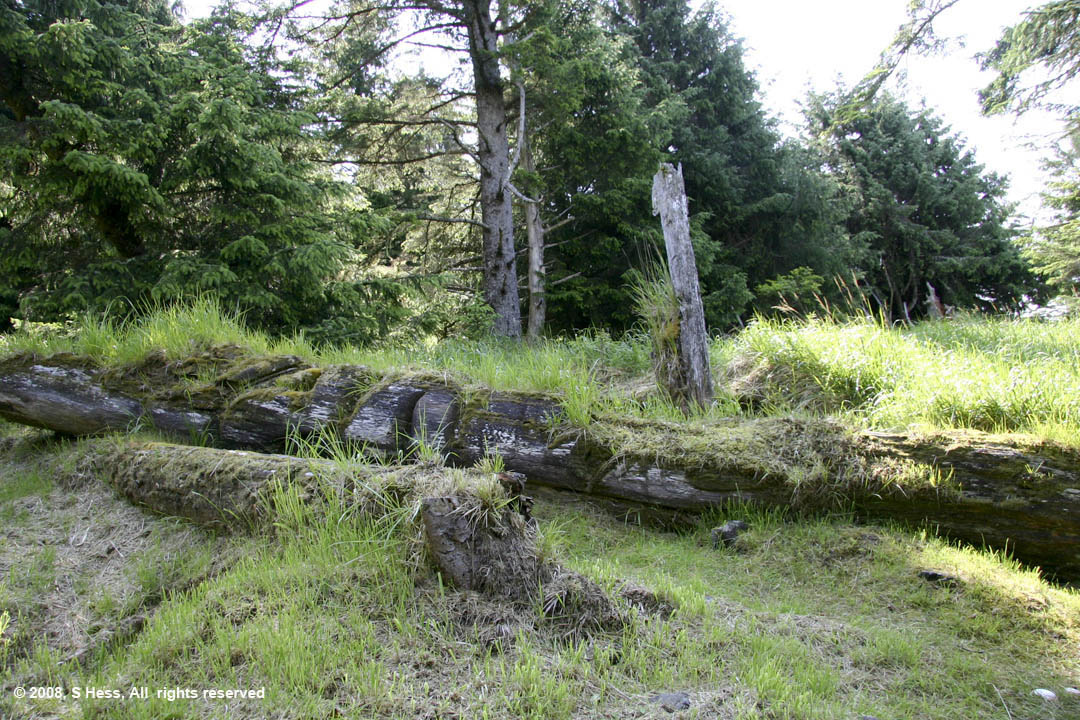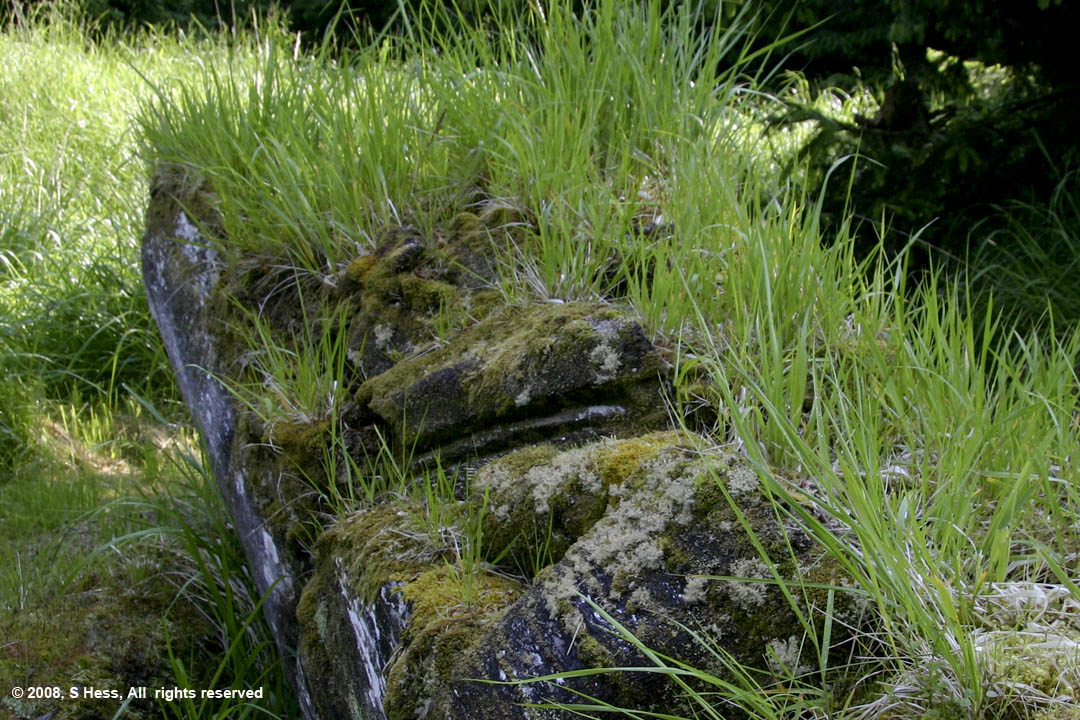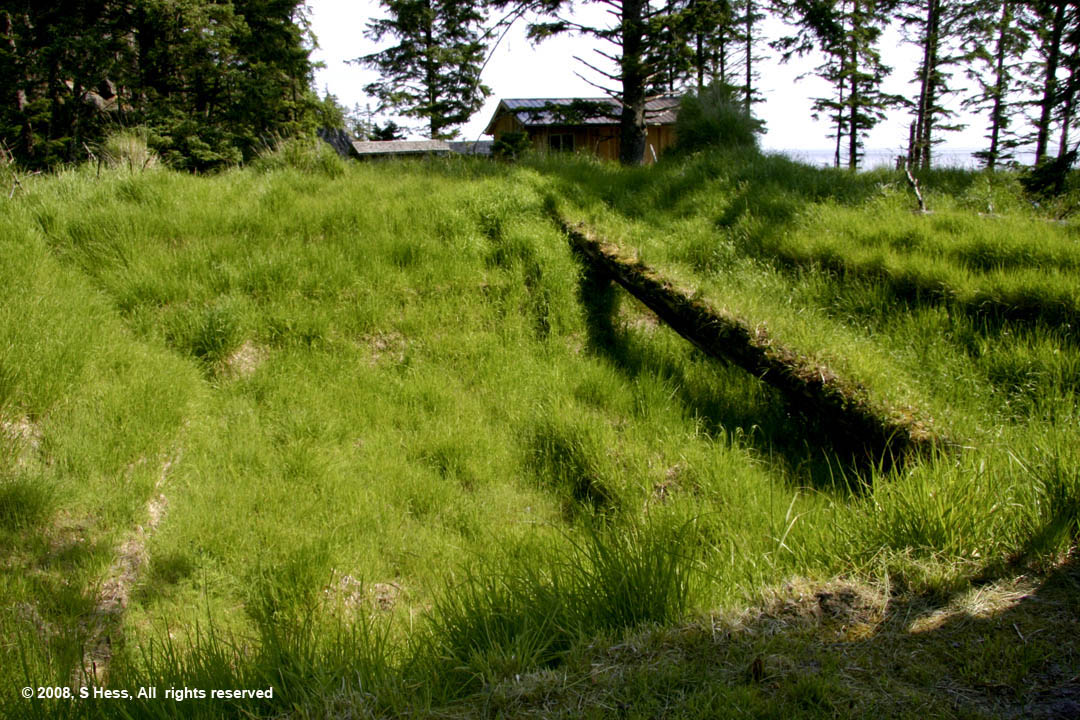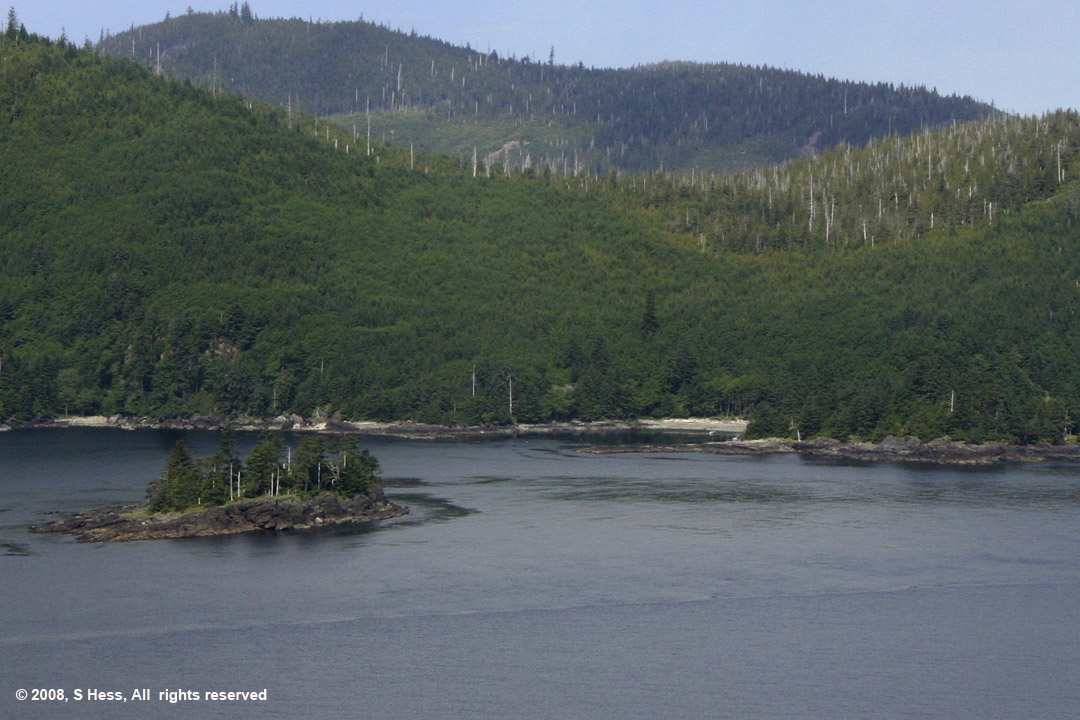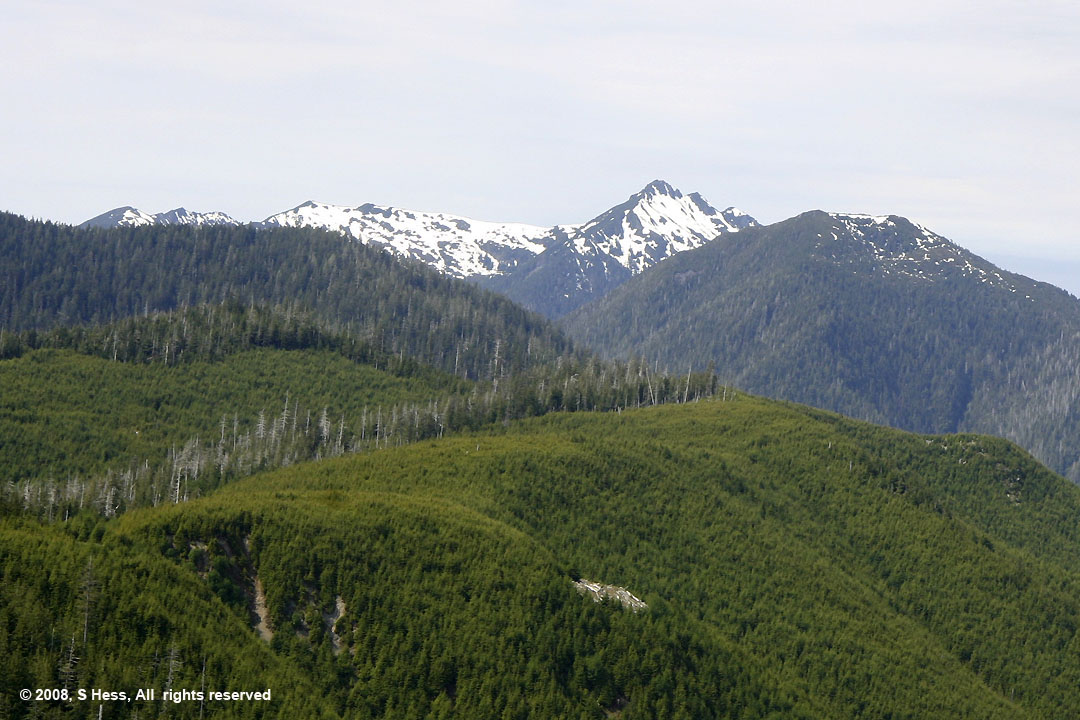
Alaska 2008
Queen Charlotte Islands, BC
1 July 2008
General Information
Local Map
Photographs and Commentary
Click on pictures to enlarge
We got up this morning not knowing what the status of our trip today will be. The tour company was asked to call us and did not. We and the other couple chartering the flight showed up at 7:45 AM at the flight service company and met the pilot. He showed us an e-mail from the boat operator in Rose Harbor indicating he will not be taking passengers to Ninstints until after July 10th. The pilot asked if we were willing to accept the alternative, Skedans, and we agreed. Since it is only a trip of a few hours, he suggested we take off at 10 AM.
At 10 AM we were back at the flight service office. As we were walking towards the plane, we could see lightning in the hills to the south (our direction of travel). The pilot said, "don't worry about it," and we took off. We headed east towards Sandspit and the airport and then headed south to Louise Island and Skedans. We could see the storm moving to the northwest and hit only a brief shower before landing at Skedans. We were greeted by Girl, the Watchman guide, who told us that they were being rotated out and would not be able to give us a tour. She offered us books we could use as reference and told us that we could walk around by ourselves. At that moment, she and theother watchman received a call that the boat picking them up would be quite late and Girl could guide us after all. This was a great outcome since we had been told at the Visitors Center that Girl was the most knowledgeable guide. We spent about an hour and a half walking through the remains of Skedans before taking off to go back to Queen Charlotte City
Skedans is a Haida village that was abandoned in 1876 after smallpox killed off nearly 90 percent of the villagers. Yesterday, at the Haida Heritage Center, we were advised that the survivors of this village and others similarly affected villages moved to the area of Queen Charlotte City. Nature soon took over the abandoned village and the houses and totems started to decay. Today, none of the boards that made up the walls of the buildings exist, at least where we could identify them. The recognizable things that remain of the houses are a few roof beams. In 1878 there were fifty six totem poles standing facing the bay at Skedans. By 1954 only eleven remained erect. Today, there are a few that are "semi erect" and many are lying on the ground, slowly returning to the earth.
There were several different types of poles. House frontal poles were, as the name implies, at the front of the house and contained an opening that served as a door. The house frontal pole essentially showed the genealogical crests of the owner. Inside house poles did not support the house, but showed the crests of the owner or his wife. Memorial poles, as the name implies, commemorated the life of an important person. Memorial poles were tall and only had one figure at the base and an uncarved shaft above. The shaft had lines cut into them, each line representing a potlatch that the individual hosted. The final two types of poles were single and double mortuary poles. Mortuary poles had the tops hollowed out to hold a bentwood box containing the remains of the deceased. Memorial poles were usually erected for important people. When the pole decayed and fell, the Haida practice was to take the bentwood boxes to the mortuary house. There has been no effort on the part of the Haida to preserve these villages and the poles. They believe that everything returns to the earth.
Skedans must have been quite a place in its time. It was a village with a population of 500 people and 27 buildings. Now it is lush with foliage and hundred year old trees. Walking through the remains of the village gave us both a strange feeling. It is almost as though the spirits of the people that used to live in this place are still here.
On the way to and back from Skedans, we flew over forests that showed the results of clear cutting. The lumber industry was very strong and had the support of the Province of British Columbia. In 1985 the Haida people had enough of their islands being defaced and started a protest on Lyell Island. The Province insisted that they had the right to decide how the resources on the islands could be used. The Supreme Court of Canada ruled in the favor of the Haidas and the result was the creation of Gwaii Haanas National Park Preserve and Haida National Heritage Site. This area is jointly managed by The Haidas and Canadian Federal Government. Travel into Gwaii Haanas is limited and every person entering the preserve must go through an orientation.
Our plane, a De Havilland Beaver. The Beaver is a favorite of the bush pilots and has an almost a cult following. It was produced between 1947 and 1967 and many of the planes are still flying.
As we took off, we could see a thunder storm to the south. Our course avoided the storm. When we arrived in Skedans, the Watchmen told us that this was the worst storm that they have lived through with lightning strikes all around them.
A tree growing around a fallen totem pole
Right, a decaying totem still showing some detail of the original carving

The poles lying on the ground are the remains of a double mortuary pole
Right, When this pole was placed in the ground it twisted. The square hole was cut through the totem and poles inserted so that it could be rotated to face the water.


Detail of the pole at right.
Right, for some reason, this pole was supported and prevented from falling. The Watchman did not know why.

The leaning pole is a memorial pole and has 13 lines representing the number of potlatches hosted by the chief being memorialized.
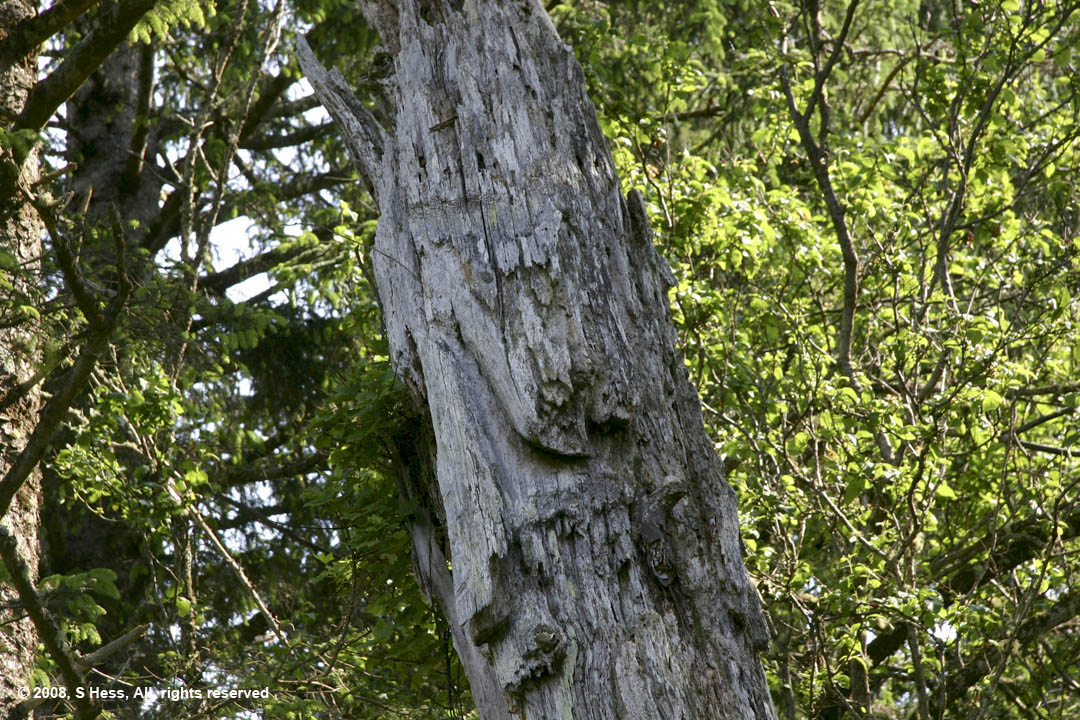
Detail from the pole at left

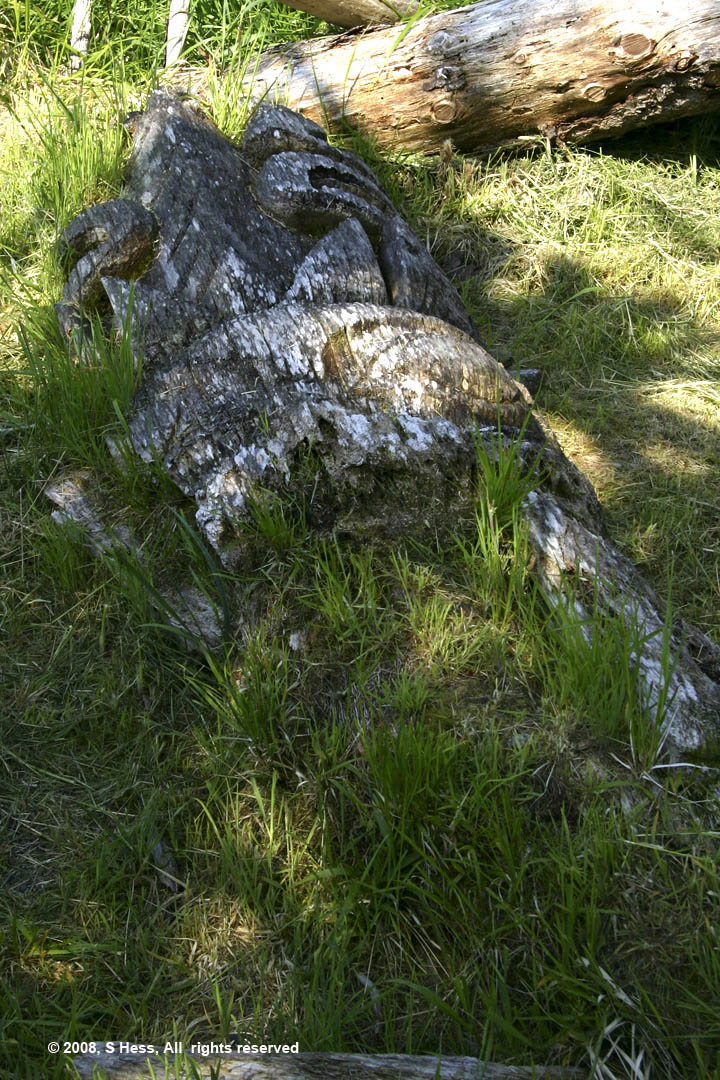
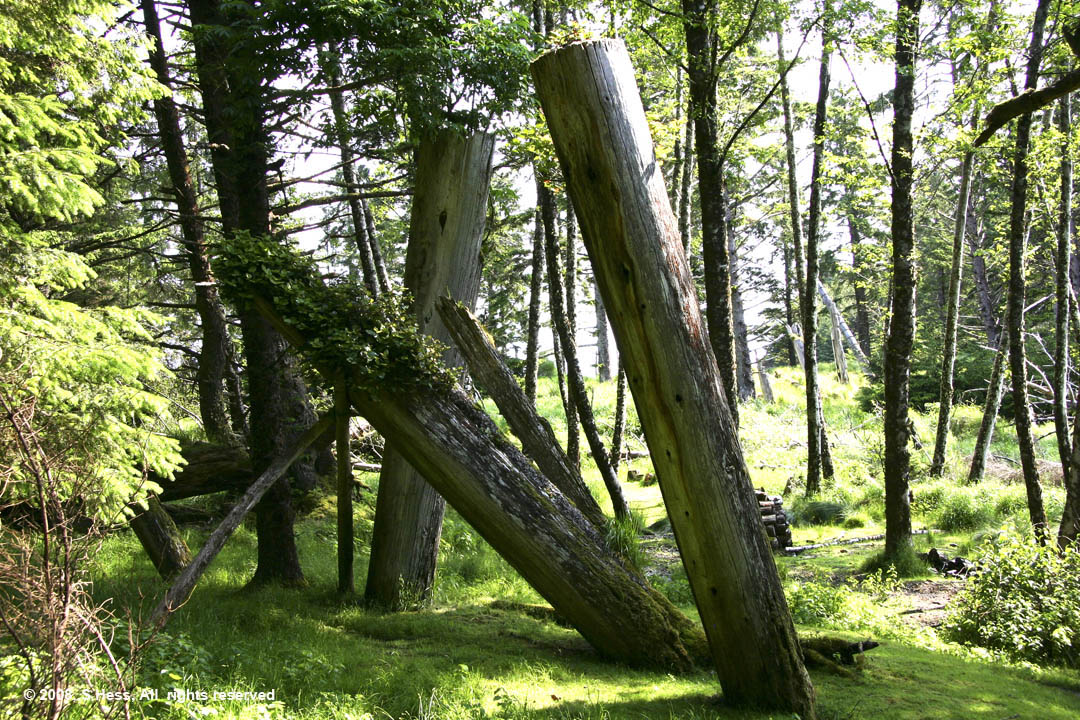
This was the home of the chief. One of the roof beam is lying across the opening. Three tiers of benches were cut into the ground and it is said that the chief could host up to five hundred people in the house.
Leaving Skedans. The beach in front of the village is in the center.
Clear cut forest and logging roads show the impact of logging on the islands
Mount Morseby, at 3,918 feet (1164 m), the tallest mountain in the Queen Charlotte Islands
Returning to Queen Charlotte City. Our hotel is the blue roofed structure on the right.
Seen On the Road... or on the dock
